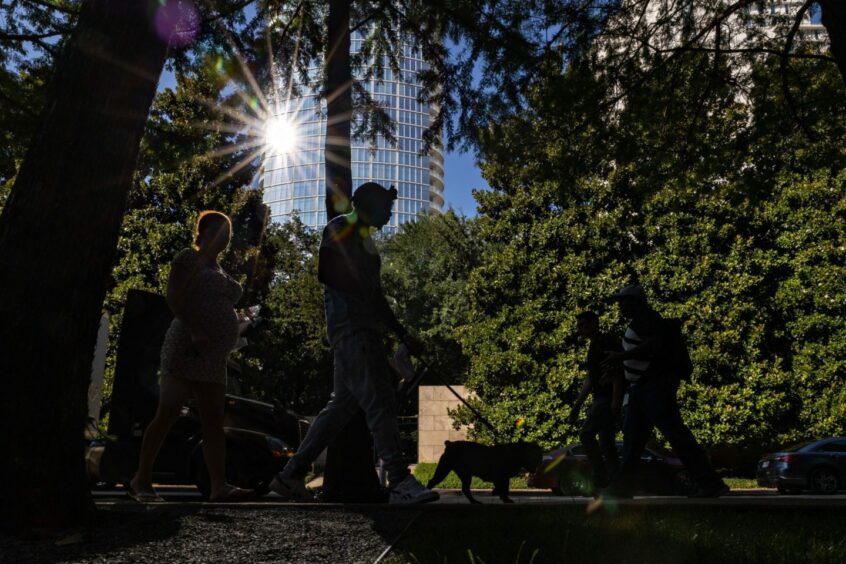
Texas residents and businesses, including the biggest names in oil, autos and technology, are being asked to conserve electricity Monday afternoon during a heat wave that’s expected to push the state’s grid near its breaking point.
The call for conservation lasts from 2 p.m. to 8 p.m., and no system-wide outages are expected for now, said the Electric Reliability Council of Texas, the main grid operator. Compounding the record demand are low wind speeds, which are keeping the state’s massive fleet of turbines at less than 10% of their potential output.
The tightest hour Monday is expected to be from 2 p.m. to 3 p.m., when the amount of available generating capacity is seen at just 0.6% above anticipated demand, according to ERCOT data. Temperatures across Texas, including in Austin, San Antonio, Waco, and Abilene could set records for the date and Houston could get close with a high of 102 Fahrenheit (39 Celsius), said David Roth, a senior branch forecaster with the US Weather Prediction Center.
“Places like Austin are going to be above 100 through the weekend,” Roth said. “The heat is not going anywhere.”
Texas’s power grid remains under scrutiny more than a year after the system collapsed during a winter storm, leaving much of the state without power for days. More than 240 people died, and the true economic costs topped $50 billion. Officials enacted a raft of reforms following the crisis, but critics warn the system remains vulnerable.
ERCOT and state regulators asked industrial power users to prepare to curtail their usage voluntarily on Monday, especially when prices surge, said Katie Coleman, an attorney for the Texas Association of Manufacturers, who described the communication as typical for summertime events.
“There have been no directives for any industrials to curtail involuntarily,” she said.
The biggest companies operating in Texas include Exxon Mobil, Tesla, Apple and American Airlines Group, and two Major League Baseball teams currently playing their seasons. The NASA Johnson Space Center is in Houston.
Roth said drought, which covers nearly 87% of Texas, is adding to the high temperatures. Without much soil moisture the sun’s energy goes directly into heating the air. An area of high pressure stuck over the lower Great Plains into Texas is just magnifying the sultry conditions.
There may not be as many record temperatures in coming days, but that doesn’t signal a cool-off because it becomes harder to set new highs as July unfolds, Roth said.
“For a lot of that area, it is going to be a while before they are below 100,” Roth said.